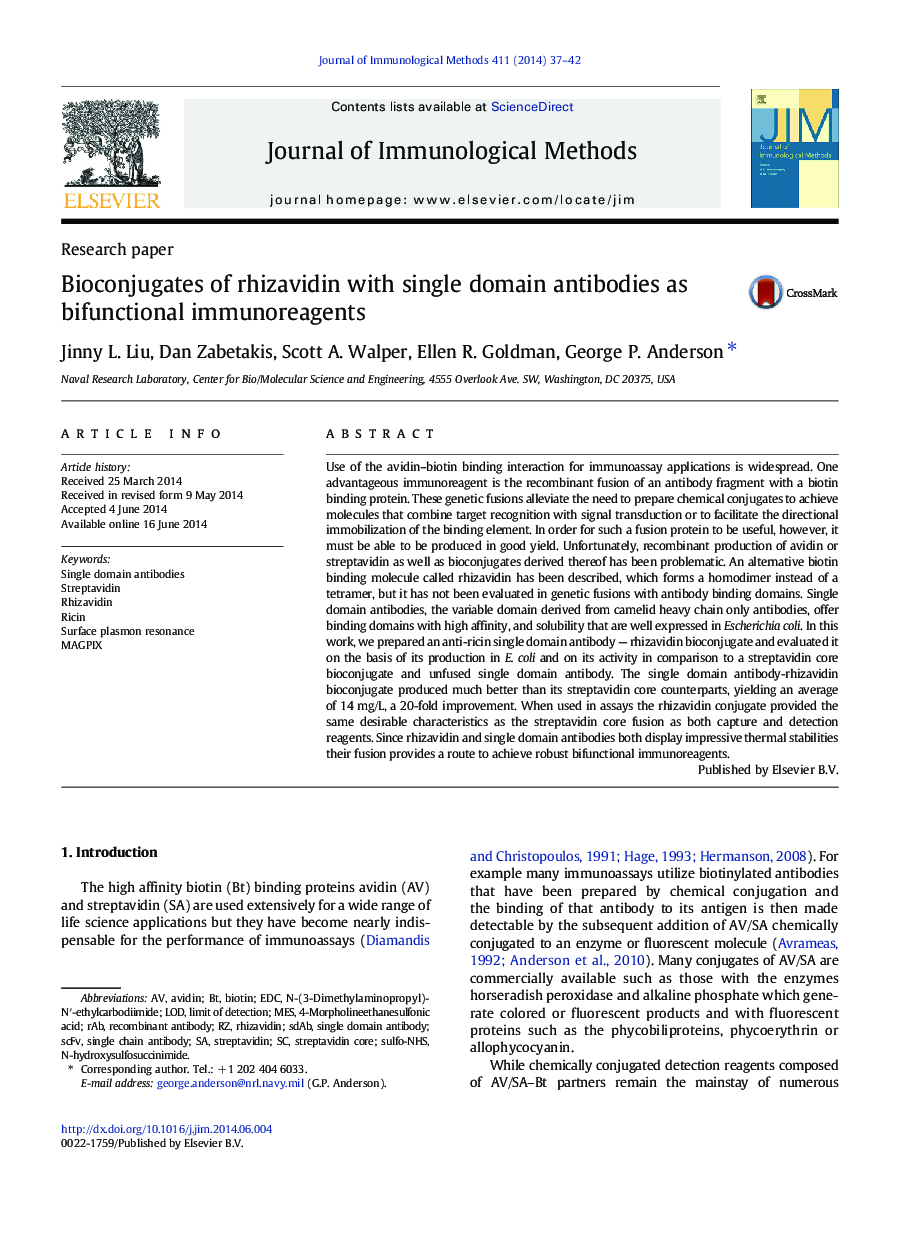| کد مقاله | کد نشریه | سال انتشار | مقاله انگلیسی | نسخه تمام متن |
|---|---|---|---|---|
| 2088108 | 1545698 | 2014 | 6 صفحه PDF | دانلود رایگان |

• Dimeric rhizavidin — single domain antibody fusion construct was developed.
• Rhizavidin — sdAb fusion constructs were well produced in E. coli.
• Provided oriented capture surface 10-fold better than randomly attached
Use of the avidin–biotin binding interaction for immunoassay applications is widespread. One advantageous immunoreagent is the recombinant fusion of an antibody fragment with a biotin binding protein. These genetic fusions alleviate the need to prepare chemical conjugates to achieve molecules that combine target recognition with signal transduction or to facilitate the directional immobilization of the binding element. In order for such a fusion protein to be useful, however, it must be able to be produced in good yield. Unfortunately, recombinant production of avidin or streptavidin as well as bioconjugates derived thereof has been problematic. An alternative biotin binding molecule called rhizavidin has been described, which forms a homodimer instead of a tetramer, but it has not been evaluated in genetic fusions with antibody binding domains. Single domain antibodies, the variable domain derived from camelid heavy chain only antibodies, offer binding domains with high affinity, and solubility that are well expressed in Escherichia coli. In this work, we prepared an anti-ricin single domain antibody — rhizavidin bioconjugate and evaluated it on the basis of its production in E. coli and on its activity in comparison to a streptavidin core bioconjugate and unfused single domain antibody. The single domain antibody-rhizavidin bioconjugate produced much better than its streptavidin core counterparts, yielding an average of 14 mg/L, a 20-fold improvement. When used in assays the rhizavidin conjugate provided the same desirable characteristics as the streptavidin core fusion as both capture and detection reagents. Since rhizavidin and single domain antibodies both display impressive thermal stabilities their fusion provides a route to achieve robust bifunctional immunoreagents.
Figure optionsDownload as PowerPoint slide
Journal: Journal of Immunological Methods - Volume 411, September 2014, Pages 37–42